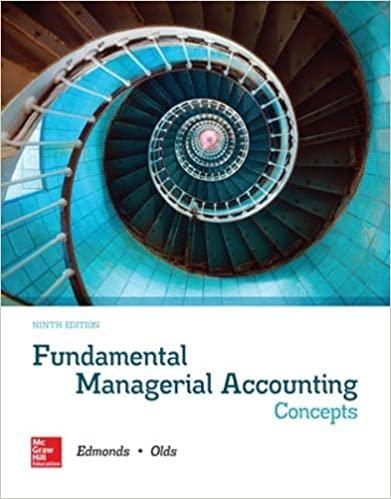

Below, I attached what I believe to be the answers to the following questions. The first attachment, consisting of numbers is my calculation for question #6. I have trouble understanding why an auditor would want to select the highest number in the lowest range. I'm assuming this number would be the $6446 as it is the highest number in the lower limit of planning materiality, which corresponds to the current assets account.
The second question pertains to performance materiality. For question #7, I computed a performance materiality of $4,434 and now I am asked to name two accounts that would require a lower performance materiality. Can you explain to me how I would know which account would require lower performance materiality? (i.e. What are the indicators of knowing which account would require a lower performance materiality?). I am guessing that it is current assets and current liabilities, but I am not sure how one can tell which account it is.
The third question is what is the difference between control and detection risk.
Materiality Bases (in thousands): Fiscal 2018 Actual Fiscal 20 1y Financial Projected Financial Planning Materiality Levels Statement Statement Lower Limit Upper Limit Base Amounts Amounts Percent Dollar Amount Percent Dollar Amount Income Before Taxes 84463 103900 2.00% $ 1,689.26 7% $ 5,912.41 Net Revenues 1243788 1305600 0.50% $ 6,218.94 2% $ 24,875.76 Current Liabilities 189380 205200 2.00% S 3,787.60 7% $ 13,256.60 Current Assets 322320 347100 2.00% $ 6,446.40 7% $ 22,562.40 Total Ass 593255 640400 0.50% $ 2,966.28 2% $ 11,865.10 0.75 $ 4,434.31 $ 18,656.82 $ 9,942.45 $ 16,921.80 $ 8,898.836. Using page 232 as a guide, compute (and state) the amount of planning materiality for the Ann Aylor audit. Explain clearly why an auditor would select the highest number in the lowest range. Based on the planning materiality assessment, the amount of planning materiality for the Ann Aylor audit is $5,912 (in thousands). However, the highest number in the lowest range is $6,446 (in thousands) with current assets being the base in the computation of planning materiality. This means that the combined misstatement or omission of current assets of $6,446 (in thousands) or less would be considered immaterial; in other words, the financial statements will be considered fairly stated. According to the case, it is reasonable for an auditor to select the highest number in the lowest range when the client is \"substantially above the minimum current ratio requirement for a loan agreement.\" 7. Using page 233 as a guide, compute (and state) the amount of performance materiality for the Ann Aylor audit. What is the auditor's conclusion if all errors in Ann Aylor's inventory account exceeded performance materiality? Name two accounts at Ann Aylor which would require a lower performance materiality amount than the computed amount (like on page 233) and give a reason for each. As determined in question 6, the dollar amount of planned materiality is $5,912 (in thousands). The multiplication factor will be 0.75 because Donna Fontain, the audit partner, believes that the likelihood of management fraud is low. Then the amount of performance materiality is computed by multiplying the amount of performance materiality by the multiplication factor, which derived at an amOunt of $4,4,34 (in thousands). If all errors in Ann Aylor's inventory account exceeded 75% of planning materiality (or a performance materiality of $4,434 (in thousands, than an auditor would conclude that the nancial statements as a whole does contain material misstatements, and therefore, are not fairly presented in all material respects. The two accounts at Ann Aylor which require a lower performance materiality amount than the computed amount ($4,434 (in thousands are current liabilities and current assets. 8. Read AS 1101 and write the audit risk modelfformula. What does ROMM stand for? What are the two components of ROMM? What does LOW control risk mean? What does LOW detection risk mean










